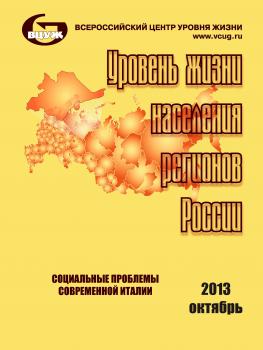The authors analyze the experience of managing pre-market employment in the Russian economy in the 1970s-80s, with the planned balance of labour resources. The data for the years 1970-1989 in the context of the economic regions of the RSFSR, and their constituent regions. The system of indicators included in the balance of labour resources, enables to assess the excesses and drawbacks of the labour force in the region from the standpoint of the need for them in social economy. This allows you to take measures to prevent the development of unemployment. Such measures include investing in creating new jobs and stimulating the migration outfl ow of excess workforce. Heralds of high levels of unemployment in certain regions were marked in Soviet times. Indirect information about them could be found in terms of balance of labour resources. This was confi rmed by the situation on the regional labour markets in the conditions of market economy. However, the mechanisms that prevent the growth of unemployment and poverty have been lost and not used. As a result of the natural development of the situation on the regional labour markets in the 2000s, there is continued growth in unemployment in the regions with the highest level of this indicator. Regional diff erences in the level and quality of life of the population stand out against the background of this process. That leads to the intensifi cation of internal migration processes designed from a relatively sparsely populated regions of the country to the relatively densely populated ones. The process of uneven development in the resettlement of the population on the territory of the Russian Federation is going on. The necessity of state intervention in the regulation of the formation and use of labor resources in the regional labour markets is very urgent. The return to using the balance sheet method is suggested as the main analytical and planning tool. This will enable to pursue an eff ective employment policy, in accordance with modern processes aff ecting the composition of the workforce as well as to. Consider the possibility of providing the domestic labour market due to redistribution and use of own labour resources, and to simulating the need to attract additional sources of labour resources in the form of foreign labour.
еmployment, unemployment, a labour market, a labour force balance.
1. Breyev B.D. Balance of the Movement of Population and Labour Resources and Its Features. Reproduction of Population and Labour Resources, 1974. (in Russian)
2. Vorob’yova O.D. Labour Market and Migration. Moscow, MAKS Press Publ., 2011. 76 p. (Special Reports Series).
3. Korovkin A.G., Korolyov I.B., Yedinak Ye.A. Educational Characteristics of the Workforce as a Factor of Harmonization of Supply and Demand on the Russian Labour Market. In the Collection of Scientifi c Works: Institute of Economic Forecasting of the Russian Academy of Sciences. Moscow, MAX Press Publ., 2015, pp. 222-240 (in Russian)
4. Korovkin A.G. The Problems of Coordination of Labour Demand and Supply in the Russian Labour Market. Problems of Forecasting. 2011, I. 2 (in Russian)
5. Kostikov V.G., Litvyakov P.P. Balance of Labour (Content and Methodology Development), Moscow, Ecomomika, 1965. (in Russian)
6. Kotlyar E.A. Labour Force in the USSR, Moscow, «Mysl’», 1967. (in Russian)
7. Mazanova M.B. Distribution of Productive Forces (Growth Factor of Labour Productivity). Academy of Natural Sciences, Institute for Regional Economic Research. Moscow, «Alcor publisher» Publishing house, 2015. 80 p. (in Russian)
8. Mintz L.Ye. Balance Problems of Labour and Use of Labour Resources in the USSR. Moscow, «Statistika» Publ., 1967 (in Russian)
9. The Population of Russia During 100 Years (1897-1997). Stat.col. The State Statistics Committee of Russia. Moscow, 1998, pp. 88-89. (in Russian)
10. Rybakovsk’y L.L. Development of the Regional Balance of Labour Resources for the Future, Use of Labour Resources in the Far East, USSR Academy of Sciences, Far Easten Branch. Khabarovsk, Book Publishing House, 1965 (in Russian)
11. Rybakovsk’y L.L. Methodological Bases of the Development of the Balance of Labour resources, Labour Resources Formation and Use. Moscow, «Economika» Publ., 1975 (in Russain)
12. Sonin, M Ya. the Reproduction of Labour Power in the Soviet Union and Balance of Labour, M., Goplanizdat, 1959.
13. Sonin M.Ya. Actual Problems of Manpower. Moscow, 1965. (in Russian)
14. Social Services: Problems and Judgments. Materials of the Sixth Millerovskij Readings. (Moscow, December 2002). Moscow, 2002. 384 p. Vorob’yov O.D. Population Distribution and Regional Socioeconomic Policy. pp. 51-58. (in Russian)
15. Strumilin S.G. Our Labour Resources and Prospects. Problems of Labour Economics. In 5 Volumes. Volume 3. Moscow, «Nauka» Publ., 1964. (in Russian)
16. Turner, J. Toward a Sociological Theory of Motivation. American Sociological Review. 1987, 52 (1). pp. 15-27. 17. Topilin A.V. Labour Market of Russia and CIS Countries: Realities and Prospects. Moscow, CJSC «Publishing house «Economika», 2004. 321 p. (in Russian)
17.
18. Topilin A.V. Internal Migration and the Labour Market: Analysis and Problems of Regulation. The Economist, 2014, I. 11, pp 73-82. (in Russian)
19. Labour and Employment in Russia 2007: Stat.col. Moscow, Rosstat Publ., 2007. (in Russian)
20. Labour and Employment in Russia 2012: Stat.col. Moscow, Rosstat Publ., 2014. (in Russian)





